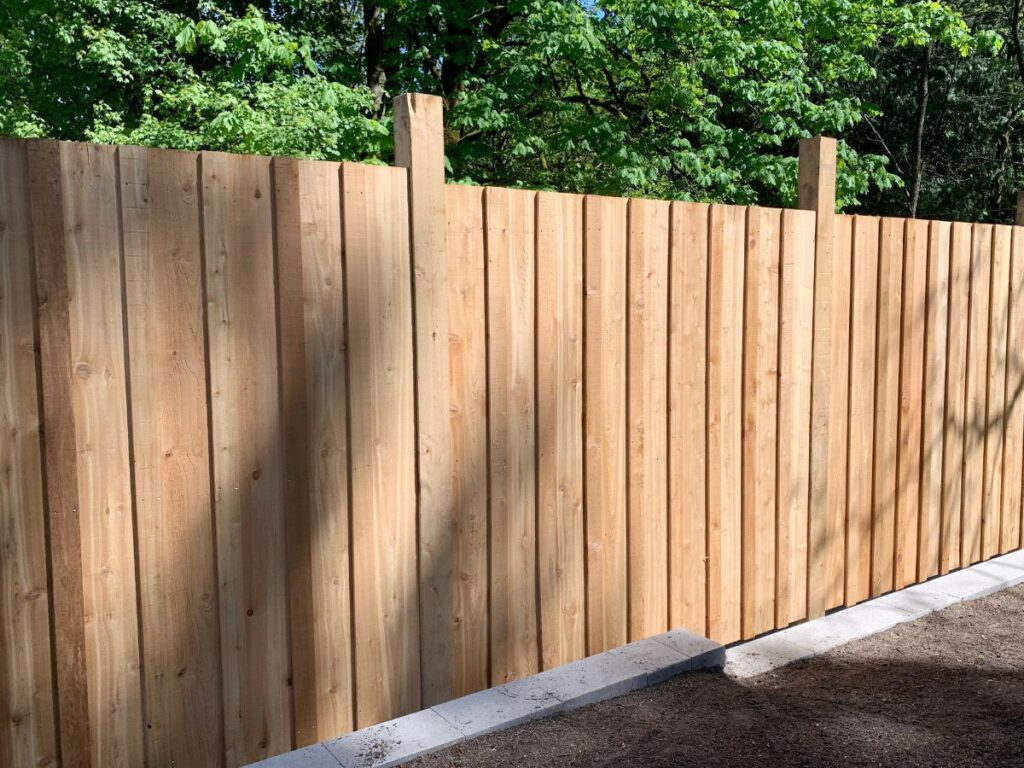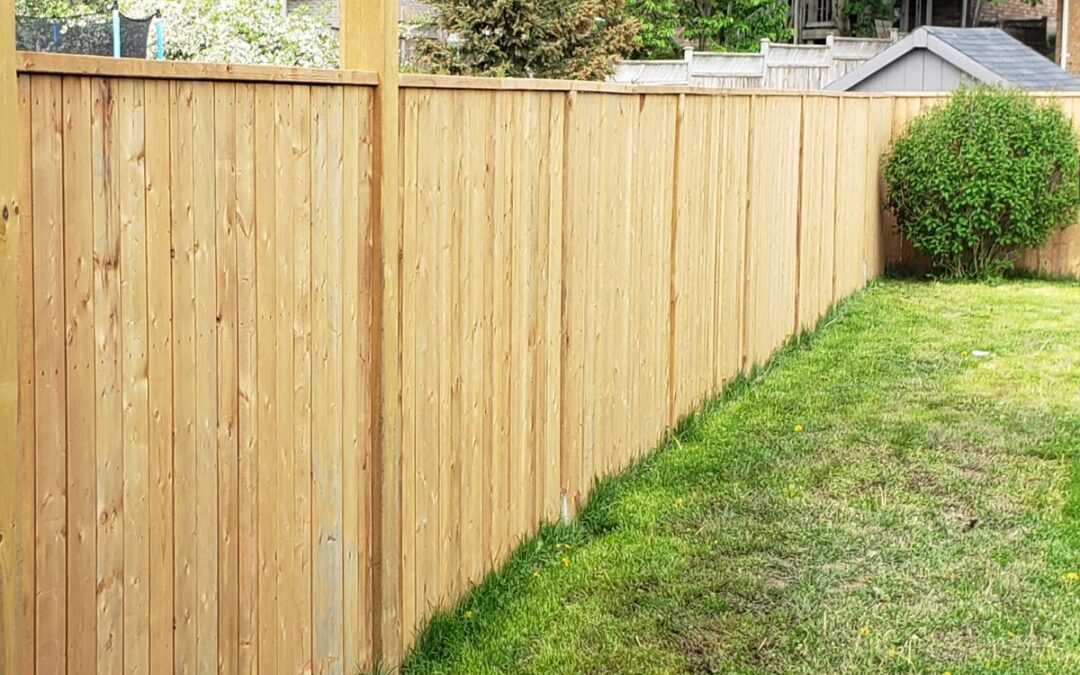Cedarwood has been a popular fencing choice for centuries. Early settlers and indigenous communities relied on simple post-and-rail designs or hand-split cedar log fencing to protect their land and livestock. However, these traditional methods weren’t always the most efficient. Building fences required intense labor—manually splitting logs, digging post holes, and assembling structures—all of which were time-consuming and physically exhausting. Over time, shifting soil would weaken the cedar wood fence, and pest damage meant constant repairs to keep the fence standing.
But today, modern techniques have revolutionized the way we build fences. We now have innovations such as precision milling, pressure-treated, advanced sealing techniques that don’t just make fencing stronger—they make it more efficient, and more sustainable.
Curious about how exactly cedar wood fencing has evolved over time? Let’s take a closer look below!

What Makes Cedar Wood Planks Great For Fencing?
Cedar wood planks have unique properties that make them stand out from other types of fencing materials:
- Lightweight & Easy to Handle – Its open-cell structure makes it less dense and easy to work with.
- Highly Stable – Resists swelling, warping, twisting, and cupping better than most woods.
- Soft Texture – Smooth and easy to cut or shape.
- Low Shrinkage & High Decay Resistance – Ensures long-lasting durability.
- Excellent Insulation – Offers great thermal and soundproofing properties.
- Low Flame-Spread Rating – Provides better fire resistance.
- No Resin or Pitch – Stays clean and doesn’t produce sticky substances.
Traditional Cedar Wood Fencing Methods
- Handcrafted Joinery – Traditional cedar wood fences were built using strong woodworking techniques like mortise and tenon joints, dowel joinery, and lap joints.
- Hand-Split and Hewn Logs – Before sawmills, cedar logs were hand-split and hewn using axes and adzes by wood fence installers, giving fences a rough-hewn appearance.
- Natural Weathering Finishes – Traditional fences were left to age naturally, allowing cedar’s oils to develop a silvery-grey patina, or they were treated with natural linseed oil or handmade wood fence stains.
- Manual Digging and Setting Posts – Fence posts were traditionally installed by manually digging deep holes with post-hole diggers, setting posts with packed earth or stone, and sometimes reinforcing with hand-mixed concrete.
- Hand-Hewn Decorative Elements – Custom wood-carved details, such as scalloped edges, notches, and latticework, were often incorporated to enhance aesthetics.
- All-Wood Fastening Techniques – Instead of modern nails and screws, early cedar fences used wooden pegs, dowels, and interlocking joints to maintain structural integrity without metal hardware.
How Modern Innovations Are Changing Cedar Wood Fencing?
Below are the key ways in which cedar wood fencing techniques are being improved with contemporary innovations.
Improved Wood Treatment Processes
- Pressure Treatment: Cedar wood fence is now pressure-treated with environmentally friendly preservatives that penetrate deep into the fibers to extend its lifespan.
- Advanced Sealing and Staining Solutions: Modern stains and sealers now come with UV-resistant properties, preventing the wood from fading or becoming brittle under sunlight.
- Nanotechnology Coatings: Recent developments in nanotechnology have led to ultra-thin coatings such as Silicon dioxide (SiO₂), Titanium dioxide (TiO₂), or Graphene-based that can be applied to wood to provide superior protection against weather, mold, and fungal growth.
Advanced Installation Techniques
- Post Anchoring Systems: Instead of using heavy concrete footings, metal ground spikes, and post anchors now allow for faster and more secure fence post installation while minimizing soil disruption.
- Interlocking Panel Designs: Cedar wood fences come with interlocking panels that snap together without the need for nails, screws, or adhesives. This allows for easy installation and repairs.
- Modular Fence Systems: New modular fence designs let homeowners replace individual panels rather than having to rebuild an entire fence section, saving both time and money.
Precision Milling and Customization
- CNC Machining: Computer Numerical Control (CNC) machining allows for extremely precise cuts, ensuring each fence panel and post is uniform in size and design, eliminating inconsistencies found in hand-cut wood.
- Pre-Fabricated Panels: Wood fence installers can now purchase pre-measured and pre-assembled fence panels, reducing installation time and labor costs.
- Customization Options: Modern technology enables customers to choose from a variety of finishes, textures, and intricate designs, including laser-cut patterns and decorative elements that were previously difficult to achieve with manual tools.
Enhanced Durability with Hybrid Materials
- Mixed-Material Combinations: Fencing designs are evolving beyond traditional all-wood structures, with companies now incorporating a mix of materials like glass, metal, or stone alongside cedarwood. These combinations create stylish fences that mix with modern and rustic elements.
- Metal Post Reinforcement: Instead of using wooden posts, which are susceptible to rot and termite damage, many cedar wood fences now use galvanized steel or aluminum posts. These enhance structural stability while keeping a natural wood look.
- Weather-Resistant Fasteners: Traditional nails and screws often rust over time, compromising the fence’s structural integrity. Modern fencing uses stainless steel, coated screws, and hidden fasteners that resist corrosion and provide a cleaner appearance.
- Hybrid Wood-Metal Frames: Some contemporary cedar fences use a metal frame structure with cedar planks attached to it. These frames reduce warping, which is a common problem with all-wood fences exposed to temperature fluctuations.
Weather & Pest Resistance Upgrades
- Advanced Water-Repellent Treatments: Traditional cedar wood can absorb moisture over time, leading to swelling, warping, or cracking. Modern water-repellent coatings such as acrylic-based, silane/siloxane, and oil-based penetrating sealers help prevent these issues and extend the fence’s lifespan.
- Termite-Resistant Formulations: Though cedar is naturally resistant to insects, newer chemical-free treatments, such as natural oil treatments, vinegar, and iron solutions, enhance its defense against termites and other wood-boring pests without harming the environment.
- Wind-Resistant Construction for Stability: Modern cedar wood fences use reinforced posts and specialized construction techniques, such as staggered or overlapping boards, to reduce wind resistance and prevent damage during storms.
Finishing Thoughts!
One of the biggest advantages of modern cedar wood fencing is how much easier it is to maintain compared to the past. Advanced treatments, hybrid materials, and smart design features have reduced the need for constant repairs and upkeep. However, one thing remains essential—proper staining. At Wood Wonders Fence, our company provides professional wood fence staining services to protect and enhance the wood, ensuring your fence remains as stunning and strong as the day it was installed. Contact us here to get started!

